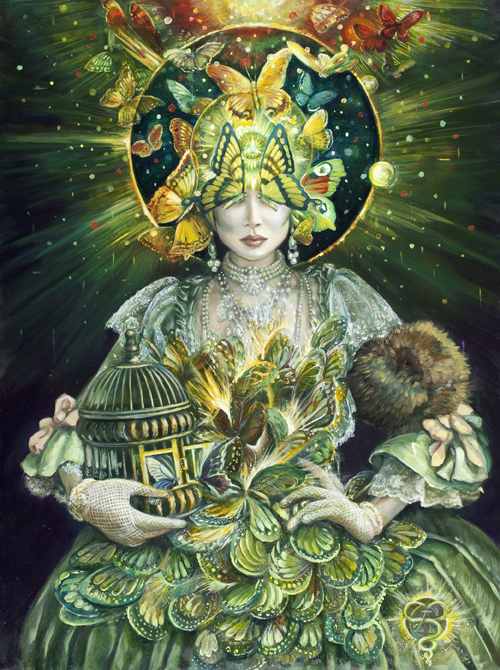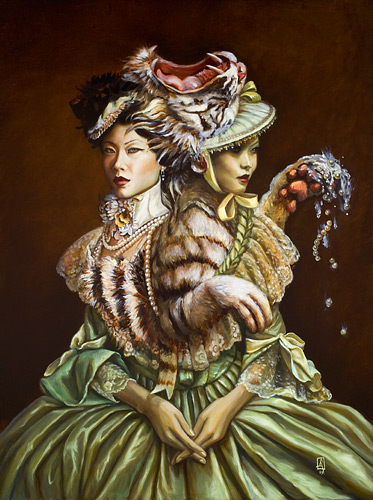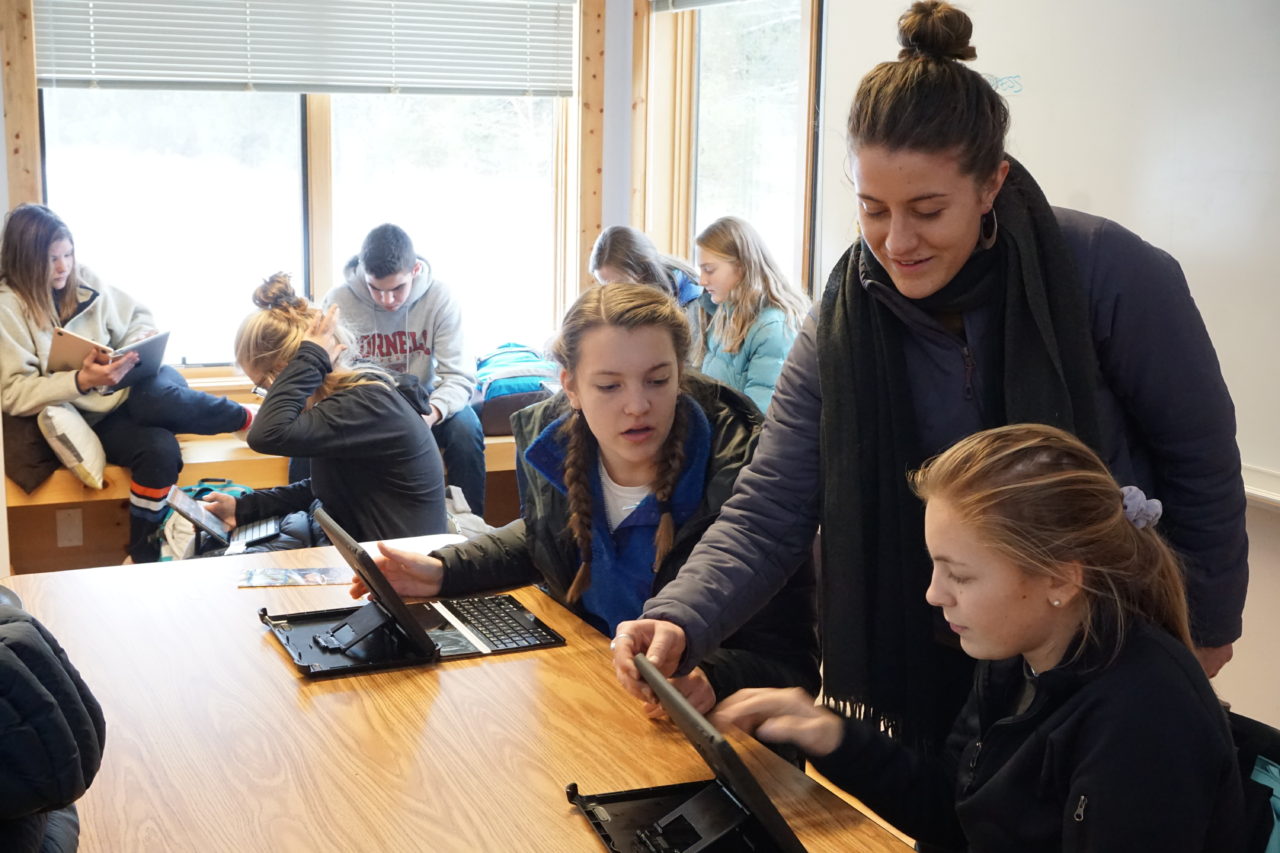Magical Realism – an Exploration in Creative Writing
During this Unit in all of our English classes, we’ve been exploring the value of a literary movement that is widely accepted as having begun in South America. The most famous female author from this movement is Isabel Allende, the niece of Chilean President Salvador Allende. It seems fitting we’d explore her style of literature while also exploring her homeland.
In our AP English Language & Composition course, the students spend their time analyzing and debating the greater meanings found in these incredibly poetic and complex pieces of literature. Ultimately, they write an analytical essay arguing for what they believe the greater meaning of one of these texts to be and supporting it with textual evidence. It is one of the more challenging essays they’ll write this semester.
In our Honors 10th & 11th grade English courses, the students are also expected to analyze and discuss the major themes of these and other Magical Realism short stories or excerpts, but afterward, they are asked to employ those elements in their own writings. In class everyday, I have my students analyze “visual texts” and then write Magical Realism pieces telling their stories. These smaller, in-class activities allow them to develop these complex skills and then ultimately apply them to personal writings in which they expose their emotional experiences.
Because the purpose of Magical Realism was, and has always been, to communicate that which is tragically real in spite of the fact that it may have never truly happened. You say, “Uh… whuh?”, and I understand the confusion, but I’ll clear it up quickly. In the news, when reporters say that another hurricane hit Haiti, or when you read in your history textbook about lynchings in the post-Civil War South, you can’t really comprehend what the emotional effect of those traumatic events was on the people that survived. Sometimes those experiences were so tragic and so disorienting for them that the way they felt was not at all the way they factually were. Anyone who has experienced this kind of helplessness, fear, or trauma understands. There are myriad examples of this style of writing in the American canon; The Things They Carried by Tim O’Brien, Beloved by Toni Morrison, and Everything Is Illuminated by Jonathan Safran Foer are just a few of these types of famous, tragic, and beautiful stories. Maybe you read them and were so caught up in the web of their accounts, you didn’t stop to ask yourself what of it was actually real? Maybe you knew, and you didn’t really care?
So, out of respect for my students’ privacy and creative genius, I’ll allow them to share their pieces about their personal lives with whomever on their own time. Here, however, they’ve allowed me to share their in-class writings. So, suspend your desire for facts, and walk slowly through their web of truths.
Carrie Ann Baade’s following painting was interpreted thus:
 The butterfly lady was always a myth my mother would tell me when I was a child. She was a beautiful woman who wore a magnificent green dress and walked around the woods followed by butterflies of every species…I always dreamed of meeting this butterfly woman… as I grew up my childish ambitions died and I joined the real world. Got a job as a photographer… after returning from Japan my boss next sent me to Mexico to photograph the annual monarch migration. When I arrived the number of butterflies was insane. I got beautiful pictures but then all of a suddent time seemed to freeze and from the middle of the grove a multitude of different species of butterflies appeared and I went bak to that little girl. I saw the womand was so captivated I forgot I had a camera to take a picture… when I returned home, no one believed me but I knew I had seen the butterfly lady.” – Jake V.
The butterfly lady was always a myth my mother would tell me when I was a child. She was a beautiful woman who wore a magnificent green dress and walked around the woods followed by butterflies of every species…I always dreamed of meeting this butterfly woman… as I grew up my childish ambitions died and I joined the real world. Got a job as a photographer… after returning from Japan my boss next sent me to Mexico to photograph the annual monarch migration. When I arrived the number of butterflies was insane. I got beautiful pictures but then all of a suddent time seemed to freeze and from the middle of the grove a multitude of different species of butterflies appeared and I went bak to that little girl. I saw the womand was so captivated I forgot I had a camera to take a picture… when I returned home, no one believed me but I knew I had seen the butterfly lady.” – Jake V.
About this painting by Carrie Ann Baade, Amparo M. wrote:
 “It was Fall in the small town. The trees were dressed in their most fiery coats and the hunter’s wife was weeping. Over the course of the year, after the hunter’s immense success selling rabbits, he had found in a reality constructed by liquor, the most intense pleasure in beating his wife… Even though she tried to hide it, her sorrow was palpable in the air around her. And the town’s people ceased to buy the hunter’s rabbits in an act of empathy to the poor wife. But the man was full of rage, and the abundance of rabbits in the woods provided a source of output for his violence. The Hunter’s house began to fill up with carcasses…”
“It was Fall in the small town. The trees were dressed in their most fiery coats and the hunter’s wife was weeping. Over the course of the year, after the hunter’s immense success selling rabbits, he had found in a reality constructed by liquor, the most intense pleasure in beating his wife… Even though she tried to hide it, her sorrow was palpable in the air around her. And the town’s people ceased to buy the hunter’s rabbits in an act of empathy to the poor wife. But the man was full of rage, and the abundance of rabbits in the woods provided a source of output for his violence. The Hunter’s house began to fill up with carcasses…”
Sebastian C. was inspired by this painting from Carrie Ann Baade’s collections. He wrote:
 “I try to control my mind as much as possible. But my thoughts are not my own, at least not completely. I don’t understand what I am. I speak and hear my voice, but I think and hear two. Deciphering what thoughts are my own drives me crazy…. My sister and I have grown up with this our whole lives. She used to yell when the roaring voice came into our heads. She fought it so much, never calming down. She grew so tired, loosing sleep at nights with the roars in her head. She became so weak that she stopped fighting. She let the roars overpower her own thoughts…”
“I try to control my mind as much as possible. But my thoughts are not my own, at least not completely. I don’t understand what I am. I speak and hear my voice, but I think and hear two. Deciphering what thoughts are my own drives me crazy…. My sister and I have grown up with this our whole lives. She used to yell when the roaring voice came into our heads. She fought it so much, never calming down. She grew so tired, loosing sleep at nights with the roars in her head. She became so weak that she stopped fighting. She let the roars overpower her own thoughts…”

